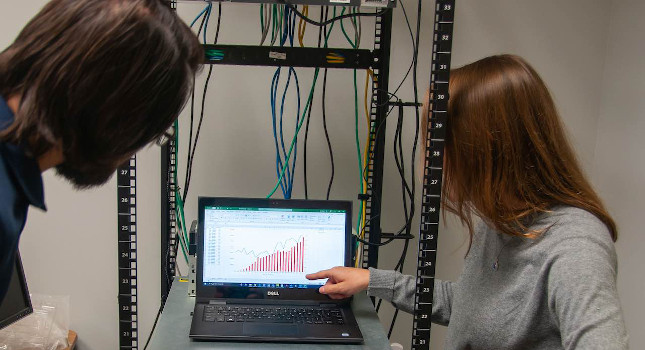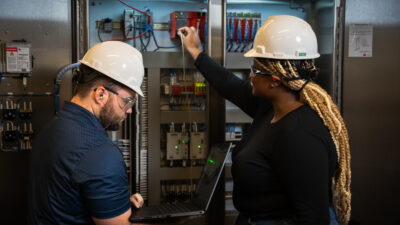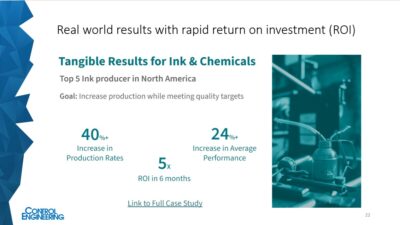It may take more effort to build a long-term relationship, but it pays off in the long run as the customer views the integrator as a trusted advisor and part of the team.

A successful system integration business is based on long-term relationships rather than one-and-done projects. While there may be more effort to build that long-term relationship, it pays off in the long run as the customer views the integrator as a trusted advisor and part of the team. An integrator will know they’ve built a long-term relationship when the company approaches them to perform a major control system upgrade the integrator installed 20 years ago and have worked with the company on with changes and version updates. That is the epitome of a strong long-term relationship between a company and an integrator. There are several key actions integrators need to take to grow, strengthen and nourish that long-term relationship.
Overdeliver on projects
After the integrator has worked hard to win the first project with the customer, having a bad project is the easiest way to lose that customer forever. When executing the project, integrators need to make sure to not only meet the requirements — whether it’s schedule or other deliverables — but go above and beyond. Be ready for the factory acceptance testing (FAT) more than the day before and let the customer know you are ready for the FAT. Integrators also can double-check their system before the customer arrives for the FAT. A smooth FAT builds confidence in the quality of work and ensures the site installation will go as expected.
If the customer expresses an interest in enhancing their system, be open to the idea even though it doesn’t recover any additional revenue. These could be simple requests such as an additional filter on the alarm history or a new summary display of values important to maintenance. In the case where the integrator does provide additional enhancements, be sure to check with the customer’s project manager and also be sure to get credit for the additional work.
Be upfront and honest
Honest and upfront communication is key to building a long-term relationship. Before, during and after a project, be sure to keep the customer informed of any developments. This includes concerns about the project and issues that come up. Letting the customer know about items that might impact the project allows all parties to start planning. Hiding information and hoping to make up for it later in the project is a recipe for disaster; the integrator will not be able to hide the information and the customer will find out.
Regular communication during a project about the technical aspects will help ensure the integrator is meeting the customer’s expectations (see Figure 1). Just having the customer show up at a FAT to see and hear about the system for the first time guarantees the customer will have concerns with the system they are purchasing. Updating the customer regularly can help identify concerns early and prepare the integrator and the customer for successful collaboration during the FAT and afterwards.
Open and honest communication also puts you in a position to hear from the customer about other opportunities, the state of their business and lets you share other interesting solutions being implemented (see Figure 2). Being there and talking to the customer helps build the long-term relationship because they know you are available.
Admit your failings and correct them
Related to honest and upfront communication, be sure to admit any failures to the customer. This could be a failure in estimation, a failure in making the technology aspect work or simply forgetting to order a part on the critical path. Admitting failure and not blaming someone else builds trust with the customer. Just as important is taking the time to figure out why it happened and what will be done to fix the problem. Once the particular case has been addressed, the integrator also needs to put controls or processes in place to make sure the problem doesn’t happen again. Sharing all of this with the customer shows the customer the integrator is in it for the long haul and is reliable and honest.
Listen to and look out for the customer’s needs
Many times, a customer will bring a problem or a proposed solution where they have already decided the best way to solve the problem or implement the solution. The solution the customer puts forward or the method might be based on what they have done in the past or what they have seen work elsewhere. Integrators have likely seen many more solutions to similar problems and are familiar with other tools that might be a better fit for their needs. To enhance the long-term relationship, be sure to listen to what their underlying needs are and address those. If you only implement what the customer asks for, it might not solve the real issue they have.
Likewise, don’t ignore what they are saying and deliver what you think they need. Be sure to understand their needs and solve that problem. If you are just bringing the shiniest new tool and it doesn’t solve their problem, they aren’t going to trust you in the future and will look to develop relationships with those who do solve their actual needs. Take time to explain to the customer the ramifications of their ideas and plan a different path forward together.
Communicate with the customer’s future in mind
Integrators should on the lookout for the customer and help them see what their control system will be or could be in the future (see Figure 3). Helping the customer understand the changing control system landscape will help build a long-term relationship. When a customer approaches an integrator about a project, be honest about the technical lifecycle of the system that will be provided.
Also, be on the lookout when you are at the customer site to see what control system components that might be at the end of life or could be nearing the point where it will be unsupportable. Be proactive in looking ahead and let the customer know what they should be thinking about or planning for in the years ahead. This will help the customer plan for the future.
Be responsive
Sometimes, this can be the easiest way to develop a long-term relationship, but it also can be one of the most difficult. When a customer asks for something, immediately helping them out makes the integrator part of their team and shows they’re reliable. This doesn’t have to be gratis work; integrators should get paid for their effort. There are several different needs the customer has. It could be a critical need where their manufacturing line is down or running at reduced capacity. In that case, they are looking for an immediate call or an individual onsite. Maybe they are looking at putting together a budget for next year. Addressing their request in a timely manner so they aren’t worried about meeting a deadline helps the customer have confidence in the integrator. Or, maybe they are looking for help a couple weeks out and it is a low priority, but their request should be addressed in a timely manner.
The hardest part of being responsive is there are likely multiple customers that need immediate attention. Prioritizing these needs, shift resources, and address requests are common challenges of the system integration industry. Being able to find an additional resource to help the customer, even if it isn’t the exact right fit, might be the answer. You can send an engineer who might not know the exact system but who can talk on the phone to the right engineer and fix the problem. Looking for creative ways to solve the customer request helps build a relationship.
Looking ahead
Long-term relationships with customers are critical for growing a successful system integration business. The long-term relationship takes a consistent and concerted effort and is not built on one action but the combination of many choices over time. Although the immediate effect of each one of these actions may not be seen, you will see everything you have accomplished together with the customer when you look back 20 years later. That certainly will be worth every bit of effort.
Ian Burns is president of Applied Control Engineering Inc.
Applied Control Engineering is a member of the Control System Integrators Association (CSIA).



